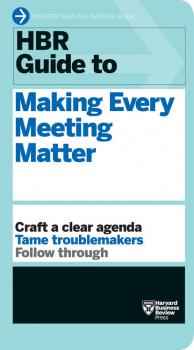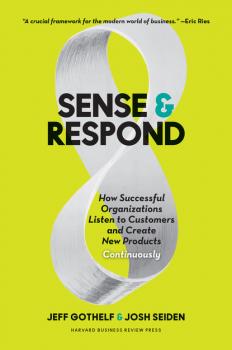ТОП просматриваемых книг сайта:
Маркетинг, PR, реклама
Различные книги в жанре Маркетинг, PR, реклама, доступные для чтения и скачиванияАннотация
As retailers have become more powerful and global, they have increasingly focused on their own brands at the expense of manufacturer brands. Rather than simply selling on price, retailers have transformed private labels into brands. Consequently, manufacturers such as Johnson & Johnson, Nestle, and Procter & Gamble now compete with their largest customers: major retail chains like Carrefour, CVS, Tesco, and Wal-Mart. The growth in private labels has huge implications for managers on both sides. Yet, brand manufacturers still cling to their outdated assumptions about private labels. In Private Label Strategy: How to Meet the Store Brand Challenge, Nirmalya Kumar and Jan-Benedict E.M. Steenkamp describe the new strategies for private labels that retailers are using, and challenge brand manufacturers to develop an effective response. Most important, they lay out actionable strategies for competing against – or collaborating with – private label purveyors. Packed with detailed international case studies, valuable visuals, and hands-on tools, Private Label Strategy enables managers to navigate profitably in this radically altered landscape.
Аннотация
How do you gain influence for an idea?In Breaking Out, idea developer and adviser John Butman shows how the methods of today’s most popular “idea entrepreneurs”—including dog psychologist Cesar Millan, French lifestyle guru Mireille Guiliano (French Women Don’t Get Fat), TOMS founder Blake Mycoskie, and many others—can help you take an idea public and build influence for it.It isn’t easy. Butman argues that the rise of the “ideaplex” (TED, Twitter, NPR, YouTube, online learning, and all the rest) has caused such an explosion in the creation and sharing of ideas that it has become much easier to go public—yet much harder to gain influence. But it can be done.Based on his own experience in advising content experts worldwide, Butman shows how the idea entrepreneur breaks out—by combining personal narrative with rich content, creating many forms of expression (from books to live events), developing real-world practices, and creating “respiration” around the idea such that other people can breathe it in and make it their own. The resulting idea platform can reach many different audience groups and continue to build influence for many years and even decades.If you have an idea and want to make a difference in your organization, build a change movement in your community, or improve the world in some way—this book will get you started on the journey to idea entrepreneurship.
Аннотация
Is your company a storyteller—or a storydoer?The old way to market a business was storytelling. But in today’s world, simply communicating your brand’s story in the hope that customers will listen is no longer enough. Instead, your authentic brand must be evident in every action the organization undertakes.Today’s most successful businesses are storydoers.These companies create products and services that, from the very beginning, are manifestations of an authentic and meaningful story—one told primarily through action, not advertising. In True Story, creative executive Ty Montague argues that any business, regardless of size or industry, can embrace the principles of storydoing. Indeed, our best-run companies—from small start-ups to global conglomerates—organize around a coherent narrative that is then broadcast through every action they take (from product design to customer service to marketing). Montague shows why storydoing firms are nimble, more adaptive to change, and more efficiently run businesses.Montague is a founder of the growth consultancy co:collective and the former president and CCO of J. Walter Thompson, the largest advertising agency in North America. He brings his depth of creative business experience to the book and provides a clear framework and proven process for bringing you and your customers together in the creation of your brand story.Montague introduces five critical elements—what he calls the “the four truths and the action map”—that are the foundation of storydoing:• the participants (your customers, partners, and employees)• the protagonist (your company today)• the stage (the world around your business)• the quest (your driving ambition and contribution to the world)• your action map (the actions that will make your story real for participants)The book is filled with examples of how forward-thinking organizations—including Red Bull, Shaklee, Grind, TOMS Shoes, and News Corporation—are effectively using storydoing to transform their organizations and drive extraordinary results.
Аннотация
Make every minute count. Your calendar is full, and yet your meetings don’t always seem to advance your work. Problems often arise with unrealistic or vague agendas, off-track conversations, tuned-out participants who don’t know why they’re there, and follow-up notes that no one reads—or acts on. Meetings can feel like a waste of time. But when you invest a little energy in preparing yourself and your participants, you’ll stay focused, solve problems, gain consensus, and leave each meeting ready to take action. With input from over 20 experts combined with useful checklists, sample agendas, and follow-up memos, the HBR Guide to Making Every Meeting Matter will teach you how to:Set and communicate your meeting’s purposeInvite the right peoplePrepare an achievable agendaModerate a lively conversationRegain control of a wayward meetingEnsure follow-through without babysitting or haranguing Arm yourself with the advice you need to succeed on the job, from a source you trust. Packed with how-to essentials from leading experts, the HBR Guides provide smart answers to your most pressing work challenges.
Аннотация
Pork dorks. Craftsters. American Girl fans. Despite their different tastes, these eclectic diehards have a lot in common: they’re obsessed about a specific brand, product, or category. They pursue their passions with fervor, and they’re extremely knowledgeable about the things they love. They aren’t average consumers—they’re superconsumers.Although small in number, superconsumers can have an outsized impact on a company’s bottom line. Representing 10% of total consumers, they can drive between 30% to 70% of sales, and they’re usually willing to spend considerably more than the average consumer. And because they’re so engaged and passionate, they can offer invaluable advice to managers looking to improve their products, change their business models, energize their cultures, and attract new customers.In Superconsumers, growth strategy expert Eddie Yoon lays out a simple but extremely effective framework that has helped companies of all types and sizes achieve more sustainable growth: he’ll show you how to find, listen to, and engage with your most passionate and profitable consumers, and then tailor your decisions to meet their wants and needs. Along the way, he’ll let you into the minds and homes of superconsumers of all kinds, revealing what makes them tick and why they’re willing to spend so much more than other consumers.Rich with data and case studies of companies that have implemented superconsumer strategies with great success, Superconsumers is a fun, practical, and inspiring guide for anyone interested in making their best customers even better.
Аннотация
Digital networks are changing all the rules of business. New, scalable, digitally networked business models, like those of Amazon, Google, Uber, and Airbnb, are affecting growth, scale, and profit potential for companies in every industry. But this seismic shift isn’t unique to digital start-ups and tech superstars. Digital transformation is affecting every business sector, and as investor capital, top talent, and customers shift toward network-centric organizations, the performance gap between early and late adopters is widening.So the question isn’t whether your organization needs to change, but when and how much.The Network Imperative is a call to action for managers and executives to embrace network-based business models. The benefits are indisputable: companies that leverage digital platforms to co-create and share value with networks of employees, customers, and suppliers are fast outpacing the market. These companies, or network orchestrators, grow faster, scale with lower marginal cost, and generate the highest revenue multipliers.Supported by research that covers fifteen hundred companies, authors Barry Libert, Megan Beck, and Jerry Wind guide leaders and investors through the ten principles that all organizations can use to grow and profit regardless of their industry. They also share a five-step process for pivoting an organization toward a more scalable and profitable business model.The Network Imperative, brimming with compelling case studies and actionable advice, provides managers with what they really need: new tools and frameworks to generate unprecedented value in a rapidly changing age.
Аннотация
The End of Assembly Line ManagementWe’re in the midst of a revolution. Quantum leaps in technology are enabling organizations to observe and measure people’s behavior in real time, communicate internally at extraordinary speed, and innovate continuously. These new, software-driven technologies are transforming the way companies interact with their customers, employees, and other stakeholders.This is no mere tech issue. The transformation requires a complete rethinking of the way we organize and manage work. And, as software becomes ever more integrated into every product and service, making this big shift is quickly becoming the key operational challenge for businesses of all kinds. We need a management model that doesn’t merely account for, but actually embraces, continuous change. Yet the truth is, most organizations continue to rely on outmoded, industrial-era operational models. They structure their teams, manage their people, and evolve their organizational cultures the way they always have.Now, organizations are emerging, and thriving, based on their capacity to sense and respond instantly to customer and employee behaviors. In Sense and Respond, Jeff Gothelf and Josh Seiden, leading tech experts and founders of the global Lean UX movement, vividly show how these companies operate, highlighting the new mindset and skills needed to lead and manage them—and to continuously innovate within them.In illuminating and instructive business examples, you’ll see organizations with distinctively new operating principles: shifting from managing outputs to what the authors call “outcome-focused management”; forming self-guided teams that can read and react to a fast-changing environment; creating a learning-all-the-time culture that can understand and respond to new customer behaviors and the data they generate; and finally, developing in everyone at the company the new universal skills of customer listening, assessment, and response.This engaging and practical book provides the crucial new operational and management model to help you and your organization win in a world of continuous change.
Аннотация
“Anyone who comes to pitch on Shark Tank should read this book first!”—Barbara Corcoran, ABC's Shark Tank“I have seen literally thousands of companies trying to raise capital and know that a great pitch deck is critical. This book gives you the playbook for creating yours.”—Naval Ravikant, cofounder and CEO, AngelList“I raised twice the amount of money I set out to in a mere five weeks. I’m naming my firstborn child after the Evans.”—Slava Menn, cofounder and CEO, Fortified BicycleHOW DO YOU LAUNCH THE VENTURE OF YOUR DREAMS?Get Backed isn’t just about startup fundraising. It’s a handbook for anyone who has an idea and needs to build relationships to get it off the ground.Over the last 3 years, entrepreneurs Evan Loomis and Evan Baehr have raised $45 million for their own ventures, including the second largest round on the fundraising platform AngelList. In Get Backed, they show you exactly what they and dozens of others did to raise money—even the mistakes they made—while sharing the secrets of the world’s best storytellers, fundraisers, and startup accelerators. They’ll also teach you how to use “the friendship loop”, a step-by-step process that can be used to initiate and build relationships with anyone, from investors to potential cofounders. And, most of all, they’ll help you create a pitch deck, building on the real-life examples of 15 ventures that have raised over $150 million.What’s in the book?• The original pitch decks and fundraising strategies of 15 ventures that raised over $150 million• Email scripts that will get you a meeting with angel investors, venture capitalists, and potential board members• Pitching exercises developed by startup talent beds like Stanford University’s d.school and Techstars• A breakdown of the 10 essential pitch deck slides, how to create them, and what questions you should answer with each• An overview of the 5 main funding sources for startups, the pros and cons of each, and who the big players are• A crash-course in visual and presentation design that will make any deck beautiful• Templates for 4 stories every entrepreneur should know how to tell• The story of one entrepreneur who showed up in Silicon Valley with no network and six months later had investments from Fred Anderson, Bono, and Peter ThielGet Backed will show you exactly what it takes to get funded and will give you the tools to make any idea a reality.
Аннотация
Dataviz—the new language of businessA good visualization can communicate the nature and potential impact of information and ideas more powerfully than any other form of communication.For a long time “dataviz” was left to specialists—data scientists and professional designers. No longer. A new generation of tools and massive amounts of available data make it easy for anyone to create visualizations that communicate ideas far more effectively than generic spreadsheet charts ever could.What’s more, building good charts is quickly becoming a need-to-have skill for managers. If you’re not doing it, other managers are, and they’re getting noticed for it and getting credit for contributing to your company’s success.In Good Charts, dataviz maven Scott Berinato provides an essential guide to how visualization works and how to use this new language to impress and persuade. Dataviz today is where spreadsheets and word processors were in the early 1980s—on the cusp of changing how we work. Berinato lays out a system for thinking visually and building better charts through a process of talking, sketching, and prototyping.This book is much more than a set of static rules for making visualizations. It taps into both well-established and cutting-edge research in visual perception and neuroscience, as well as the emerging field of visualization science, to explore why good charts (and bad ones) create “feelings behind our eyes.” Along the way, Berinato also includes many engaging vignettes of dataviz pros, illustrating the ideas in practice.Good Charts will help you turn plain, uninspiring charts that merely present information into smart, effective visualizations that powerfully convey ideas.
Аннотация
Get your idea off the ground. You’ve got a great idea that will increase revenue or boost productivity—but how do you get the buy-in you need to make it happen? By building a business case that clearly shows your idea’s value. That’s not always easy: Maybe you’re not sure what kind of data your stakeholders will trust. Or perhaps you’re intimidated by number crunching. The HBR Guide to Building Your Business Case , written by project management expert Raymond Sheen, gives you the guidance and tools you need to make a strong case. You’ll learn how to:Spell out the business need for your ideaAlign your case with strategic goalsBuild the right team to shape and test your ideaCalculate the return on investmentAnalyze risks and opportunitiesPresent your case to stakeholders










